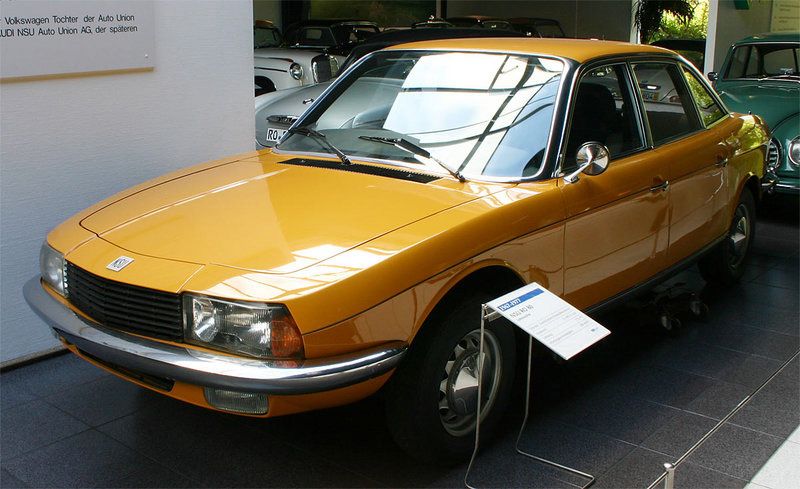America is getting behind General Motors. That’s why you’ll see so much press on the Volt->ke2721. We want to be at the forefront of automotive technology, and we haven’t had a homerun in a while. With that kind of pressure comes a great responsibility to make sure that GM is keeping its eyes on the big picture.
“Those who cannot remember the past are condemned to repeat it.” This George Santayana quote is so over used I almost hate myself for using it, but when thinking about the Chevrolet Volt, it’s too appropriate to discard. General Motors is bringing a revolutionary idea to the hybrid car market by using lithium-ion batteries to make an electric car that has a supplemental gas engine. It’s a leap forward that reminds me of another revolutionary car, the NSU Ro 80.
In mid-60s, the German manufacturer NSU was mostly known for motorcycles and small cars. The Ro 80 was supposed to be the game changer. It was a sedan that had a futuristic and aerodynamic body that contained a three-speed manual transmission that had no clutch pedal, four-wheel disk brakes (very few passenger cars had this at the time,) and a rotary engine.
The engine was supposed to be the key to NSU’s success. NSU had the exclusive patent rights to the piston-free rotary engine and thought it was the future of cars. NSU had built a handful of sports cars using the new engine, and decided it was time to go into full-scale production on what would be its flagship sedan.
In 1967, the Ro 80 was released to the world. The clean looks and high-revving engine made the car an instant hit with the German public. It was CAR Magazine’s “Car of the Year” and there was a waiting list for delivery. But the good times did not last for long.
NSU didn’t develop the engine properly. Sometimes as early as the first few thousand miles, cars would have problems with rotor tips that amounted to complete engine failures. Furthermore, the dealers were not properly trained to fix the new engine. So when an engine failed under warranty, many times they just installed a brand new one at NSU’s expense. Rumor was that if one Ro 80 owner passed another one on the street, they would wave to each other by holding up fingers representing how many engines he/she had installed.
The car that was supposed to revolutionize NSU ended up killing it. The combination of high development costs and constant maintenance expenses of the Ro 80 proved to be too much. Within two years, NSU was sold to Volkswagen as a pet project for its other new acquisition, Audi. By 1977 the Ro 80 and NSU name for cars disappeared.
The lesson here is that the Ro 80 could have been great. It was a design that was years head of any other premium European manufacturer, even the other beautiful-but-under-engineered cars from Jaguar->ke39 and Rover. The problem was that NSU was so eager to get the car on the market that it turned a blind eye to a disastrous essential piece, the engine. I hope that General Motors understands this point, and I think they do.
GM’s Vice Chairman, Bob Lutz watched the Ro 80 scenario from his backyard. During the Ro 80’s time Lutz was in Germany working for Opel and BMW. He’s seen the trappings of bad technology and knows how to avoid it though engineering. Furthermore, there is evidence that GM is watching the little details. It even is making provisions for things such as making sure gas doesn’t go stale in the Volt’s tank because drivers are only using the electric motor.
Even with this optimism, I still want General Motors to take its time on the Volt. We would rather have a correct car that arrives late to the party, than a broken piece of technology in our driveways.

